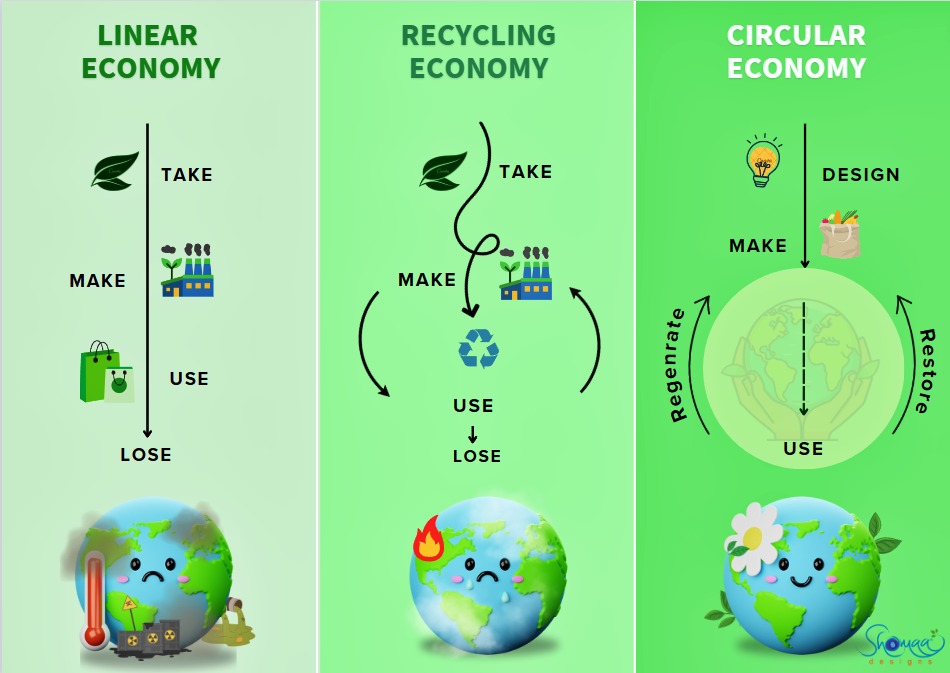Introducing the most sustainable alternative to plastic, moving towards the future of consumption with zero waste technology. Encouraging communities and businesses for responsible consumption by focusing on three factors; Reduce, Reuse & Recycle.
Experts say recycling alone will not save us. “Circular economy is a ‘bigger idea’ – a significant restructuring that forces us to rethink how we have done things since the rise of the ‘First Industrial Revolution’ . To better understand the Circular economy, we can compare it to our current Industrial economy, which is dominated by linear processes.
Why Do We Need to Shift from Linear Economy to Circular Economy?
A circular economy functions quite differently. As the system diagram of the circular economy illustrates, regeneration means materials, components and products in a circular economy contribute to systems that renew or replenish themselves throughout various life-cycles and uses. Circular economy aims to throw away nothing, thereby reducing the need to use more commodities. It closes the loop on the linear “Take-Use-loose” economy that runs on the assumption that there will always be virgin materials to turn into products, and always somewhere to put the waste. Circular economy retaining the highest utility and value of materials, components and products in circulation for as long as possible.
A circular economy reduces material use, redesigns materials and products to be less resource intensive, and recaptures “waste” as a resource to manufacture new materials and products. Industrial processes and economic activities that are restorative or regenerative by design, enables resources used in such processes and activities to maintain their highest value for maximum period of time, and aims for the elimination of waste through the superior design of materials, products, and systems (including business models). Circular economy is a change to the system in which resources are mined, made into products, and then become waste.
A circular economy entails markets that give incentives to reusing products, rather than scrapping them and then extracting new resources. In such an economy, all forms of waste, such as clothes, scrap metal and obsolete electronics, are returned to the economy or used more efficiently. The technical cycles of the circular economy make products part of the process so they can be recovered and used to create new goods over and over again. Biodegradable consumable materials such as food, jute, cotton, bamboo and wood also feed into the system by returning vital nutrients back to the soil. Circular economies maintain the natural ecosystem of the earth.
As the world’s population continues to grow, it’s becoming increasingly clear that the assumptions of a linear economy aren’t true or at the very least, sustainable. At the time of the ‘First Industrial Revolution’ less than 1 billion people inhabited the Earth. Today, the world’s population is up to 8 billion — with a growing global middle class of consumers. Not only are we using the same resources, we’re throwing them away at an alarming rate. According to a report from the United Nations, global resource extraction has more than tripled since 1970. Over 90% of raw materials are not reused.
Some Important Facts & Figures
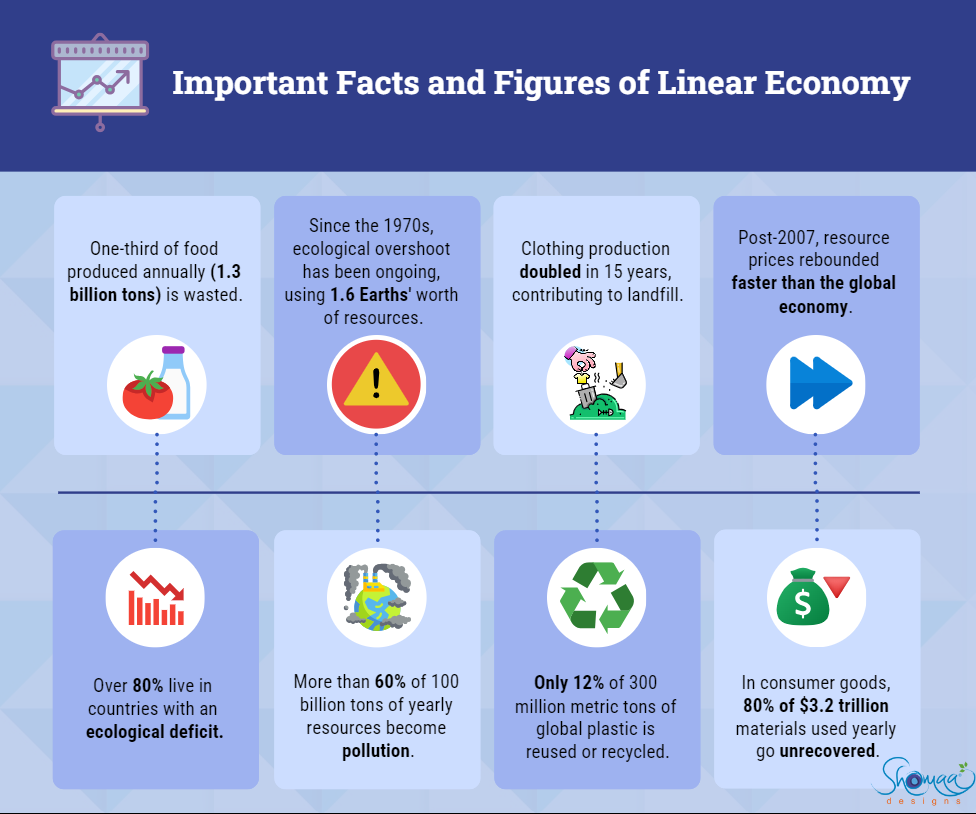
- Roughly one-third of the food produced for human consumption goes to rot or waste. That’s about 1.3 Billion tons a year.
- Since the 1970s, humanity has been in ecological overshoot, with annual demand on resources exceeding Earth’s biocapacity. Today humanity uses the equivalent of 1.6 Earths to provide the resources we use and absorb our waste.
- Over the past 15 years, clothing production has doubled, but we wear our clothes for half as long and most of the clothes pile up in Landfill.
- Since the economic downturn of 2007-2009, resource prices have rebounded more quickly than global economic output.
- More than 80% of the world’s population lives in a country running on an ecological deficit.
- Of the 100 billion tons of resources that flow into the economy every year, more than 60% end up as greenhouse gas emissions or waste. Leading towards pollution of air, water and soil, further destroying the health and the ecosystem.
- A dramatic amount of potential value is also being lost with plastics. Of the 300 million metric tons of plastic produced globally each year, only 12% is reused or recycled. The majority end up land fill, incinerated, where its value as a resource is lost forever.
- In the consumer-goods industry, about 80% of the $3.2 trillion worth of materials used each year is not recovered.
Benefits of Circular Economy
Circular Economy Solution to Climate Change: We must take action to address the climate crisis, and material recovery has a vital role to play. The concept of circular economy has gained popularity in recent years, inspiring environmentalists, governments and businesses alike. Circularity is now acknowledged worldwide as the most sought after solution to our planet’s increasing temperature. Circular economy designs out economic activities that negatively impact human health and natural systems. It supports the Sustainable lifestyle, which is important for overall planet health. They can help to reduce our emissions of greenhouse gasses. These gasses trap heat in the atmosphere, which causes the planet to warm. By reducing our emissions, we can help to slow the pace of climate change and its negative impacts. This work on a circular economy is an important part of slowing climate change. The circular economy, when designed in a thoughtful and inclusive manner, has the potential to protect the environment, improve economics, and elevate social justice. Circular economy avoids the use of fossil fuels and non-renewable energy. It regenerates living systems by preserving and enhancing renewable resources, it returns valuable nutrients to the soil to support regeneration and actively improve the environment.
Circular Economy Creates New Jobs: This can provide a way to not only protect the environment, but use natural resources more wisely, develop new sectors, create jobs and develop new capabilities. Undeserved communities in developing countries have been overburdened with the negative environmental and health impacts caused by a non-circular economy. Many landfills and manufacturing and processing facilities are located in close proximity to low-income communities. Circular economy for all aims to reduce waste and toxic materials and reuse critical minerals during manufacture and processing. Safe jobs and healthy communities are the goals.

Businesses: While the circular economy has the planet in mind, it’s actually pretty good for businesses too. After all, it increases efficiency and minimizes waste — that saves business money. Using waste materials rather than raw materials tends to be cheaper, particularly if this is waste produced in your own business, where you also cut out disposal and procurement costs. Lower costs and generate new profit streams, stabilize volatility in material prices and supply create demand for new services in collection, logistics, re-marketing, refurbishment and re-manufacturing Engage long-term customer interaction and loyalty. The conscious consumer is on the rise. Customers are becoming more and more aware of environmental issues and expect the businesses they buy from to be as sustainable as possible. Adopting elements of a circular economy gives you something great to talk about in your marketing materials. Even small touches such as Bamboo cutlery in a restaurant help customers to view your business more positively. Customers will be bypassing traditional trading channels more and more as we transition to a circular economy. There is also likely to be a rise in different kinds of businesses – tech-based. This means that there are really exciting opportunities right now for businesses to lead the way and come up with new, innovative ideas that integrate circularity.
How Businesses Adopt a Circular Economy ?
Industry is just beginning to leverage the environmental, economic, and social opportunities the circular economy provides and doing it profitably.
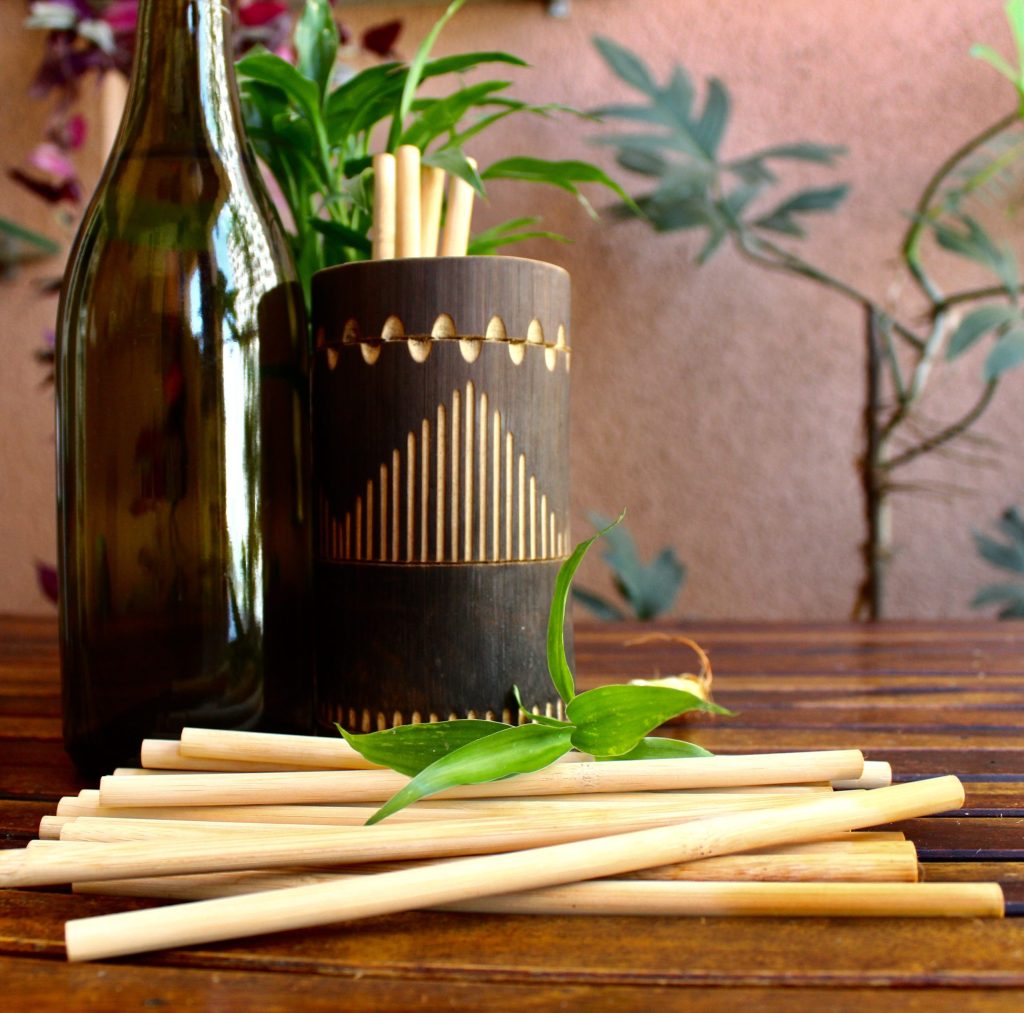
Designing circular consumer products
The convenience of plastic has come with an enormous cost to the planet. As mentioned, in the circular economy, every solution or product should be designed to be reused from the very start. This could be a simple life-cycle such as a Biodegradable Bamboo Beer Mug, Cutleries, etc. that can be converted into compost after multiple usage. As well as the actual configuration of the product, this also requires us to think carefully about the materials used. They should be long-lasting, durable, and versatile.
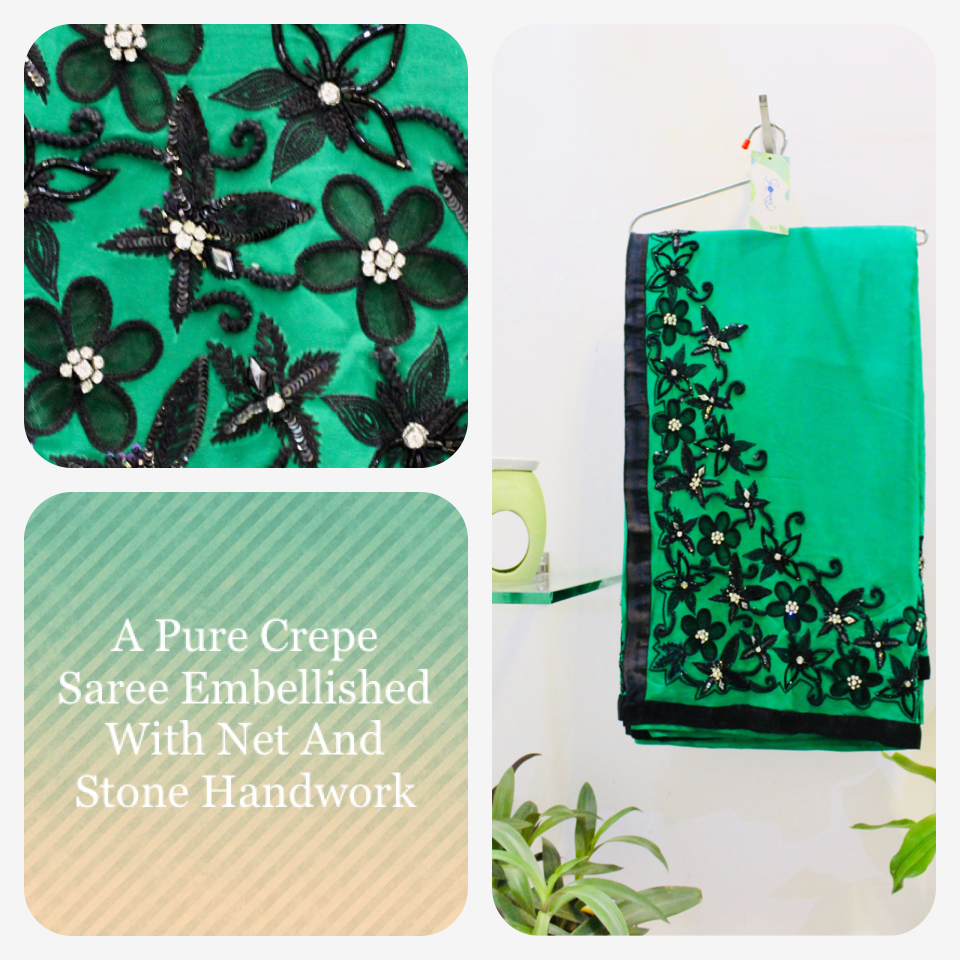
Fast fashion has fueled high rates of over consumption of products. Using 100% recyclable fabric materials like cotton, silk, Khadi, Linen etc. to produce designer garments is the best way to save natural resources and the ecosystem. Silk Sarees, the traditional Indian attire life-cycle, are big enough that they are sometimes worn by three generations.
In the furniture industry where most offerings are durable, companies are focused on extending the lifetime of materials. Furniture made from natural materials such as Bamboo, solid wood, and pine can be recycled or used for energy recovery, while veneer products are easily disassembled for repair and refurbishment.
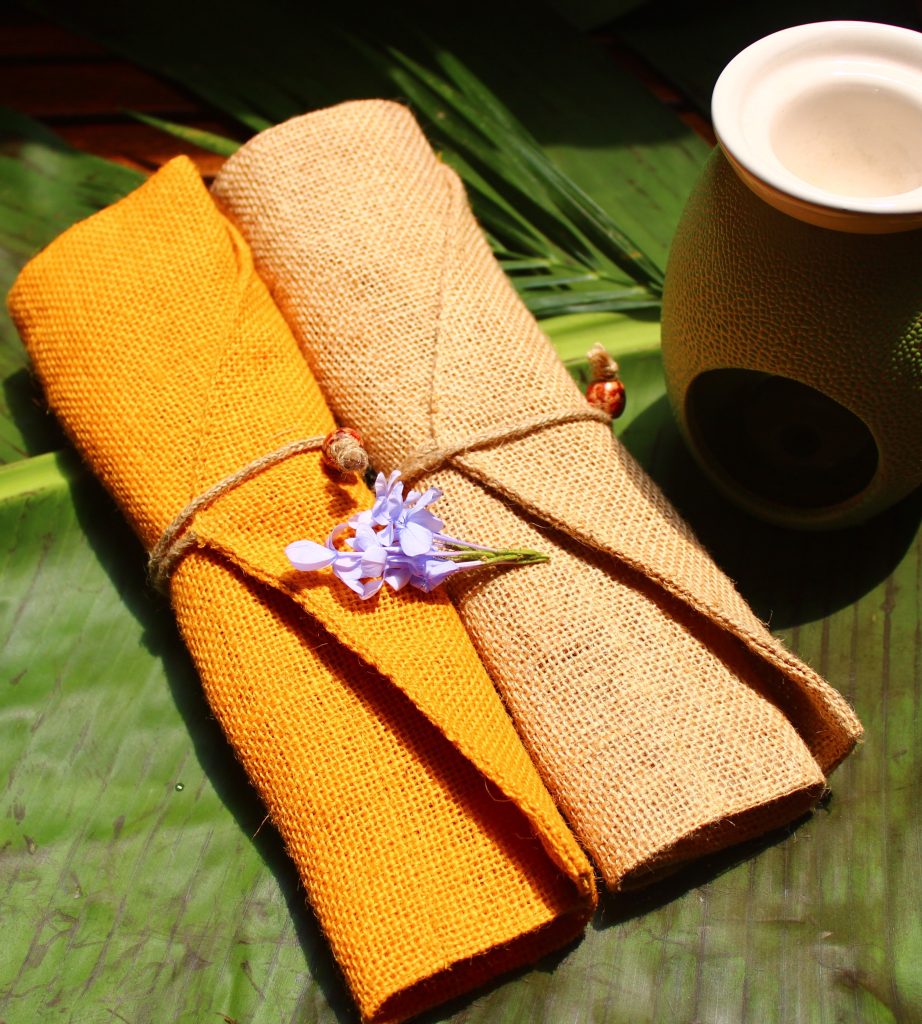
Rethinking the packaging system
Biodegradable Jute is the best sustainable material for the packaging Industry. Jute packaging items like Jute Pouches, Grow Bags, Office Files & Shopping bags are the best alternative to plastic for the retail and HORECA industry.
Using AI to reduce food waste in hospitality
Gathering and utilizing data is key for implementing circular economies. We need to know what we’re wasting, and how much of it, in order to reduce that waste. A solution that uses artificial intelligence to analyze when too much food is made or ordered, and what food is leftover. From this it can make recommendations for where waste can be minimized, which can be auctioned within meal planning and ordering of supplies.
Turning food waste into skincare
Materials such as leftover coffee grounds, apricot stones, Orange peels, and Bottle Gourd scrub are saved from landfill and used to create products with lower carbon footprints. Using waste products rather than say, freshly-grown natural ingredients, also uses up fewer natural resources, such as water for soil irrigation.
Building a Sustainable Future through Circular Economy ?
Circular economy is a visionary idea with significant challenges. The prospects of future transition beg some very important questions for us all; Do we need to continue purchasing products in the traditional sense, or just have access to them? And what kind of role do we play in the conservation, reuse, and regeneration of the natural resources we have left? Action is needed urgently, the shift toward a circular economy may appear to be progressing slowly.
By starting small, the transition to the circular economy has tremendous potential to scale up. And while it’s true the linear economy of the past served to generate jobs, improve living standards and reduce mortality rates throughout the world, it also created climate change, biodiversity loss and piles of waste. There is a need to learn a hopeful lesson from the dire consequences of the ‘First Industrial Revolution’ it’s this. As we encounter some of the most serious societal and environmental issues of our time, we’re also on the verge of Industry 4.0. This ‘Fourth Industrial Revolution’ has the power to accelerate the circular economy with modern manufacturing and waste technologies.
Small and medium-sized enterprises form the backbone of the nation, so while large corporations have already embarked on their ESG journey towards a circular economy, small companies will need support in managing their supply – this is where Shomaa Designs come in. Shomaa Designs is an excellent resource for businesses that are looking to make a positive impact on the environment. Our products and services can help businesses to reduce their environmental impact and improve their social responsibility. Here in ‘Shomaa Designs’ a circular economy is our responsibility.

